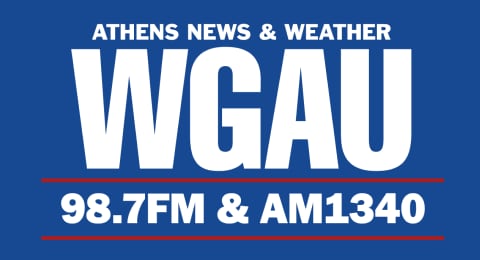UNITED NATIONS — (AP) — The U.N. General Assembly's yearly meeting of world leaders is here — and with it, an array of acronyms, abbreviations, titles and terms that can be confounding to observers. Here is some key vocabulary, decoded.
UNGA: Acronym (yes, people do pronounce it "UN'-gah") for the U.N. General Assembly's "High-level Week." It's the international organization's biggest annual event, inviting presidents, prime ministers, monarchs and other top leaders of all 193 U.N. member countries to speak to the world and each other. Although New Yorkers sometimes just use "General Assembly" to describe what many experience mainly as a week of street closures and whizzing motorcades, the assembly actually isn't just this meeting. It's a body that convenes countries' ambassadors throughout the year to discuss a wide range of global issues and vote on resolutions.
GENERAL DEBATE: The centerpiece of the week, it gives each country's leader (or a designee) the mic for a state-of-the-world speech from its viewpoint. There is a theme, chosen by the assembly's president — this year's is about "leaving no one behind" and "acting together" to advance peace, sustainable development and human dignity. But speakers use the opportunity to opine on the planet's biggest issues and hotspots, spotlight domestic accomplishments and needs, air grievances, and project statesmanship. Dignitaries are asked to wrap up within 15 minutes, but there's no buzzer or Oscars-style music. While the "debate" is less an interactive back-and-forth than a series of speeches, rebuttals are allowed at the end of each long day, and some embittered neighbor nations routinely go multiple rounds.
BILATERAL (or “bilat,” for short): Private meetings between leaders of one country and another. Some argue the real value of UNGA lies in these tête-à-têtes and other personal, off-camera encounters among decision-makers.
MINISTERIAL: Applies to meetings of cabinet-level officials, such as foreign ministers, from different countries.
SECURITY COUNCIL: The U.N.'s most powerful component, charged with maintaining international peace and security. The 15-member council can enact binding (though sometimes ignored) resolutions, impose sanctions and deploy peacekeeping troops. While this week is the Assembly's show, the council generally holds at least one meeting of its own with high-wattage attendees in town for the events next door. This week, there are set to be two council sessions, one on Ukraine and one on the topic of "leadership for peace." Who's on the council? Read on.
P5: The Security Council's five permanent members with veto power. Under a structure set up in 1945, they are China, France, Russia, the United Kingdom and the United States.
E10: The Security Council's 10 elected, non-permanent members. The General Assembly elects them for two-year terms in seats allocated by region. Calls for council reform are an UNGA staple. One major complaint is the lack of permanent members from Africa and the Latin America-Caribbean region, though some other nations also have angled for years for a permanent presence.
G77: Stands for the “Group of 77,” a developing-countries interest group that formed within the U.N. in 1964. Despite its name, it actually now has 134 members.
COP29: A major U.N. global climate conference coming up in November in Baku, Azerbaijan.
1.5 DEGREES: A crucial climate threshold. Under the 2015 Paris climate accord, countries agreed to work to limit warming to 1.5 degrees Celsius (2.7 degrees Fahrenheit) over pre-industrial times. The earth already has warmed at least 1.1 degrees (2 degrees Fahrenheit) since the mid-1800s.
SDGs: The U.N.'s " sustainable development goals, " which range from combating climate change to eliminating hunger and poverty to achieving gender equality. The U.N.'s member countries adopted the goals in 2015 as a 15-year action plan, but the pace is seriously lagging. UNGA week this year began with a "Summit of the Future," on Sunday and Monday, that's meant to "turbocharge the SDGs," as U.N. Secretary-General António Guterres has put it. If that sounds a lot like the "SDG summit" during last year's high-level week, well... consider it a sign of both the emphasis on and elusiveness of these grand goals.
SIDS: At the U.N., this stands for some 39 " small island developing states. " UNGA is an important platform for them to elevate concerns such as climate change and the existential threat they face from projections of rising seas and intensifying storms — often a painfully timely subject at a meeting that falls in the thick of the Atlantic hurricane season.
BRICS: A developing-economies coalition that initially included Brazil, Russia, India, China and South Africa. Egypt, Ethiopia, Iran, and the United Arab Emirates joined this year. Azerbaijan and Malaysia have formally applied, and Saudi Arabia has said it's considering doing so. There are many international groups centered around regional, economic, defense or other ties, but BRICS has gotten attention lately as a growing venue for Chinese-Russian influence when those powers are increasingly at odds with the West.
LDCs: Very poor nations that are known at the U.N. as " least-developed countries." Forty-five nations currently meet the criteria, which include a gross national income of $1,088 or less per person per year.
NGO: “Non-governmental organization,” such as an advocacy group, charitable foundation, nonprofit relief organization or other entity under the umbrella of what the U.N. likes to call civil society organizations.
IFIs: International financial institutions, including the so-called Bretton Woods institutions — the World Bank and the International Monetary Fund, which were established at a 1944 U.N. conference in Bretton Woods, New Hampshire. Critics — including Guterres — see the Bretton Woods duo as sclerotic entities that have badly failed poor and developing countries. The institutions have defended their work while saying they are trying to evolve.
MULTILATERALISM: Global or near-global partnership that is united and collectively develops enduring rules and shared norms — the idea that undergirds the U.N. itself and which many warn is under threat.
MULTIPOLAR: A scenario in which there are several different and sometimes competing centers of power, not a single superpower or two.
MULTISTAKEHOLDER: An approach to big projects and problem-solving that incorporates not only governments but businesses, NGOs and possibly others. Guterres is a fan, seeing this concept as key to the future of world cooperation. But some progressive groups view it as a sell-out to big corporations and other powers in the status quo.
TWO-STATE SOLUTION: A concept for resolving the Israeli-Palestinian conflict by establishing an independent Palestinian nation living in peace alongside Israel. The framework was set down in the 1993 Oslo Accords and embraced by the U.N., but progress toward implementing it stalled long before Israel's nearly year-old war with Hamas in Gaza.
SOUTH-SOUTH COOPERATION: Collaboration among Southern Hemisphere countries, organizations and people, with aims that include amplifying their voice in their own development and in international affairs.
UNILATERAL COERCIVE MEASURES: A usually critical way of describing sanctions imposed by one country in hopes of spurring some action in another.
___
See more of AP's coverage of the U.N. General Assembly at https://apnews.com/hub/united-nations
Copyright 2024 The Associated Press. All rights reserved. This material may not be published, broadcast, rewritten or redistributed without permission.

:quality(70)/cloudfront-us-east-1.images.arcpublishing.com/cmg/BGGUST7H7RESKL6I42NK3X55VI.jpg)
:quality(70)/cloudfront-us-east-1.images.arcpublishing.com/cmg/XGDFDHGENJG5HLIZP3Z6CGOOTM.jpg)
:quality(70)/cloudfront-us-east-1.images.arcpublishing.com/cmg/EANMXZUKNJBNTOAEJK2AJVMLJE.jpeg)
:quality(70)/cloudfront-us-east-1.images.arcpublishing.com/cmg/XVQZCP4AJVBB3DKQTFGAX64KRU.jpg)
:quality(70)/cloudfront-us-east-1.images.arcpublishing.com/cmg/5FKD43YOJ5BMJNGMQN3L6AH6FQ.jpg)
